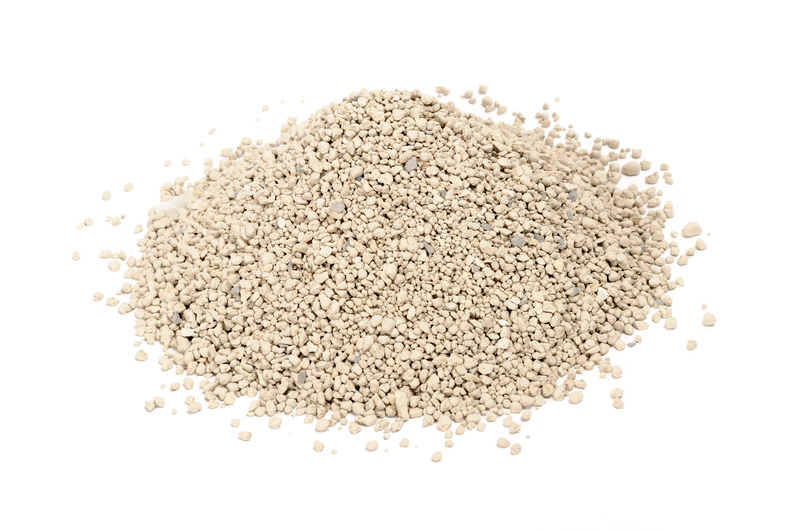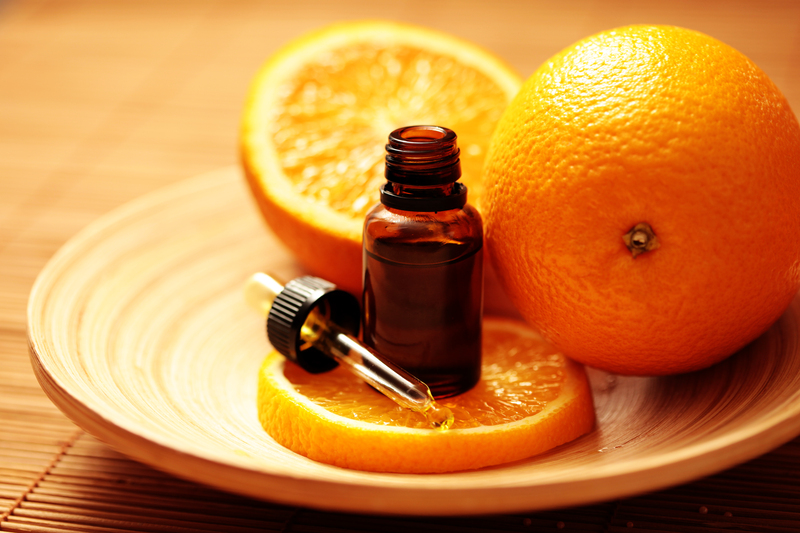Discover the Best Ways to Prevent Mold in Your Bathroom
Posted on 28/06/2025
Discover the Best Ways to Prevent Mold in Your Bathroom
Mold prevention in your bathroom is not just about cleanliness--it's about protecting your health and your home's integrity. Bathrooms are notorious for creating the perfect breeding ground for mold: warm temperatures, high humidity, and plenty of nooks and crannies. Let's explore the most effective and innovative methods to keep your bathroom mold-free for years to come.
Why Is Mold Prevention in Your Bathroom so Important?
Mold not only looks unsightly but can also pose serious health risks. Prolonged exposure to bathroom mold may lead to respiratory issues, allergies, and skin problems. Moreover, unchecked mold growth can weaken the structural integrity of your walls, ceilings, and flooring, resulting in costly repairs.
- Health Concerns: Inhaling or touching mold spores can cause sneezing, coughing, eye irritation, and more severe symptoms for those with asthma or compromised immune systems.
- Property Damage: Mold can rot wood, peel paint, and ruin grout or drywall, leading to expensive renovations.
- Odor Issues: Mold emits a musty, unpleasant smell that's hard to eliminate without thorough cleaning and remediation.
Armed with this knowledge, let's delve into the best ways to prevent mold from growing in your bathroom, ensuring a safe, fresh, and clean environment.

Understanding What Causes Mold in Bathrooms
Bathrooms are high-risk areas for mold growth. Why? The answer lies in their daily routines:
- Humidity: Hot showers and baths release moisture, increasing the bathroom's humidity.
- Poor Ventilation: Without adequate airflow, moist air lingers, allowing mold to thrive.
- Standing Water: Pooled water in sinks, shower stalls, or on the floor provides mold an ideal environment.
- Organic Materials: Wood, paper, grout, and dust can serve as mold food sources.
Common Areas Where Mold Grows in the Bathroom
Some areas are more susceptible to mold than others. Be extra cautious with:
- Shower tiles, grout lines, and tubs
- Behind and under sinks and toilets
- Ceilings, especially near exhaust fans
- Inside cabinets and behind mirrors
- Window sills and frames
Top Ways to Prevent Mold in the Bathroom
1. Improve Ventilation and Airflow
Ventilation is the cornerstone of effective bathroom mold prevention. Reducing humidity after showers is vital. Try these ventilation strategies:
- Install an exhaust fan: Choose a model rated for your bathroom's size and make sure it vents outside, not into an attic or wall cavity.
- Run the fan: Operate the fan during and for at least 20-30 minutes after bathing.
- Open windows and doors: Allow natural air circulation when weather permits.
- Use a portable dehumidifier: In particularly damp climates or windowless bathrooms, a dehumidifier can make a dramatic difference.
2. Wipe Down Surfaces After Showering
Water left on surfaces is an open invitation for mold growth. Get into the habit of drying:
- Shower walls and glass doors with a squeegee
- Countertops and sinks post-use
- The edges around tubs and toilets
This simple step significantly reduces the opportunity for mold to grow on wet surfaces.
3. Fix Leaks Immediately
Leaky faucets, pipes, or toilets lead to hidden water accumulation--a prime mold habitat. Inspect your bathroom regularly for:
- Dripping faucets or showerheads
- Pooling around the base of the toilet
- Unexplained moisture under sinks
If you discover a leak, repair it as soon as possible to stop unwanted moisture at its source.
4. Upgrade Bathroom Materials
Certain materials are more mold-resistant than others. Consider these upgrades for lasting protection:
- Mold-resistant paint: Specially-formulated paints create a non-porous barrier that inhibits mold spores from taking hold.
- Waterproof backer boards: Use cement board or other waterproof materials behind tilework instead of traditional drywall.
- Sealed grout and caulk: Apply a silicone-based sealant to grout lines and corners to repel water.
- Mold-resistant shower curtains and liners: These are designed to shed water and dry quickly.
5. Clean Regularly With Mold-Fighting Products
Frequent cleaning not only removes soap scum and dirt but also disrupts mold colonies before they take root. Use:
- Vinegar: Spray undiluted white vinegar on problem areas and let sit for an hour before wiping clean.
- Baking soda: Use as a gentle abrasive to clean grout and tiles.
- Commercial mildew removers: Effective for stubborn or recurring mold spots.
Focus cleaning efforts on the parts of your bathroom where mold is likely to grow, such as shower corners, under bath mats, and around the toilet base.
6. Reduce Clutter in the Bathroom
Clutter creates pockets where moisture and dust accumulate, giving mold a place to thrive. To prevent bathroom mold:
- Store toiletries in closed cabinets
- Hang towels and bathmats so they dry quickly
- Remove unnecessary items from the shower area
Less clutter means fewer hiding spots and easier cleaning, both essential for keeping mold at bay.
7. Monitor Humidity Levels
High humidity is the single most important factor in mold growth. Keep the bathroom's humidity below 50% whenever possible. Strategies include:
- Using a digital hygrometer to monitor moisture levels
- Running fans or dehumidifiers as needed
- Ensuring windows are sealed against leaks
By maintaining low humidity, you create an environment where mold struggles to survive.
Bonus Tips to Prevent Bathroom Mold Growth
Seal and Maintain Tile Grout
Grout is porous and can readily absorb water. Seal new grout annually and clean with a brush and vinegar regularly to deter mold growth.
Ensure Proper Drainage
Install sloped flooring in showers and around tubs to prevent standing water. Clean out drains frequently to keep water moving.
Use Natural Light
Mold prefers darkness. If your bathroom has windows, keep them uncovered during the day to let in sunshine, which naturally inhibits mold.
What to Do If You Spot Mold in Your Bathroom?
Even with the best prevention efforts, you might notice mold growth from time to time. Here's how to address it:
- Act quickly: The sooner you remove mold, the less likelihood it will spread.
- Clean effectively: Use a solution of one part bleach to 10 parts water for non-porous surfaces (never mix bleach with ammonia or vinegar).
- Assess the extent: If mold covers more than 10 square feet, consult mold remediation professionals.
- Ventilate during cleaning: Open doors and windows or use fans to prevent inhaling spores.
When to Call in a Professional
If your bathroom mold problem persists or spreads to areas you can't easily reach, it might be time to call an expert in bathroom mold remediation. Professionals have specialized tools and knowledge to:
- Detect mold behind walls, under floors, or in ventilation ducts
- Safely remove large or toxic mold colonies (like black mold)
- Restore and repair water-damaged structures
Acting quickly preserves the health of your family and the value of your property.

Conclusion: Make Mold Prevention a Habit
Preventing mold in your bathroom is an ongoing process, not a one-time task. By adopting these easy daily habits, upgrading materials, and maintaining proper ventilation, you can win the battle against bathroom mold. Not only will your bathroom look and smell fresh, but you'll also protect your home and safeguard your health. So, start implementing these strategies today and enjoy a cleaner, safer, and more comfortable home environment.
Frequently Asked Questions About Bathroom Mold Prevention
How often should I clean my bathroom to prevent mold?
Ideally, do a quick wipe-down of wet surfaces after every shower, and deep clean all surfaces weekly to keep mold under control.
Which cleaning products are best for bathroom mold?
White vinegar, baking soda, hydrogen peroxide, and bleach (never mixed) are all effective. Choose products suitable for your bathroom's surfaces, and always follow the manufacturer's guidelines.
Is bathroom mold always visible?
No--not all mold outbreaks are easily seen. Musty smells, discolored grout, or peeling paint can be signs of hidden mold in areas that need closer inspection.
Can mold return after I clean it?
Yes. If you don't resolve the cause of moisture, mold will likely return. Combine cleaning with ventilation, repairs, and upgrades for long-term prevention.
Stay proactive, and discover the best ways to prevent mold in your bathroom for a happier, healthier home!





